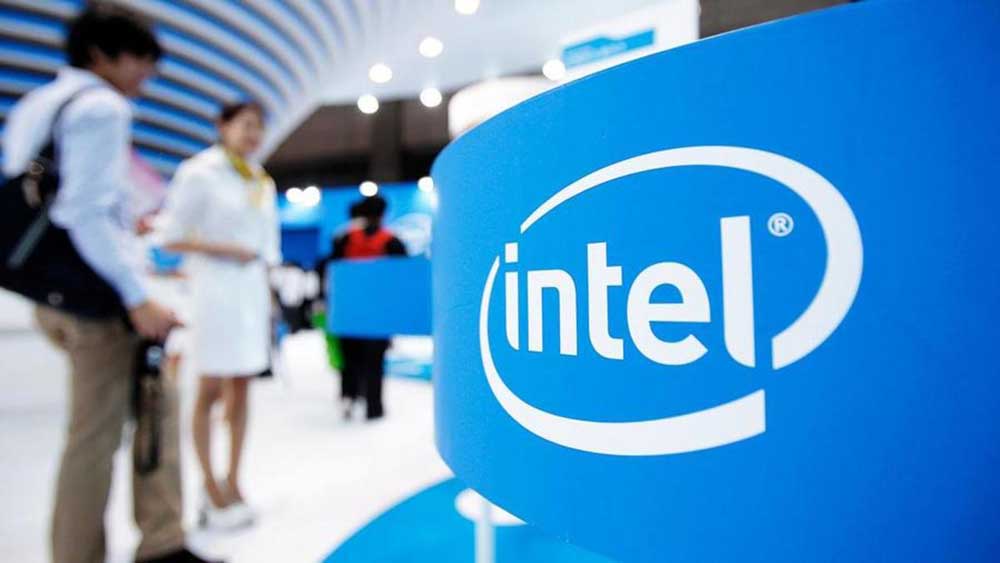Intel sales climb but stock falls 10% on data center weakness, tepid outlook
Published 2:03 pm Friday, January 26, 2024

- Intel logo
Intel’s quarterly sales grew for the first time in two years last fall, according to financial results reported Thursday afternoon.
The chipmaker’s stock price fell more than 10%, though, as Intel said sales were down in its data center business and the company forecast only modest growth in the months ahead. The company insisted its long-term outlook continues to improve as it works to dig itself out from a succession of technological missteps.
“We exited the year accomplishing exactly what we set out to do,” CEO Pat Gelsinger told Wall Street analysts on a conference call late Thursday. “We are confident in our performance and financial trajectory for the year ahead.”
Fourth-quarter sales totaled $15.4 billion last quarter, up nearly 10% from a year earlier and at the high end of the range Intel had told investors to expect.
Intel benefited from a stronger global economy and renewed demand for PCs. Sales in that segment were up 33% last quarter.
But revenue fell 10% in Intel’s key data center and artificial intelligence business.
The company is facing intense competition in those markets from AMD and Nvidia, whose chips are manufactured by Taiwan Semiconductor Manufacturing Co.
Intel said it expects sales growth around 9% in the current quarter and said profit margins will be comparable to last fall. Efforts to develop make five big leaps in manufacturing technology in four years remain on track, Gelsinger said, which Intel hopes will restore its technological leadership as soon as next year.
Investors remain dubious. The company’s shares fell by $5.01 in after-hours trading to $44.54. The stock has traded between $24.73 and $51.28 in the past year.
Intel is Oregon’s largest corporate employer, with 22,000 workers at its Washington County campuses.
It was once the world’s biggest and most advanced semiconductor manufacturer but lost that title several years ago after a series of manufacturing failures that slowed the development of new chips even as rivals were making big advances.
Gelsinger has sought to rebuild the company with a renewed focus on engineering and manufacturing. Intel has made great progress over the past two years but hasn’t overtaken its competitors. It was, by the company’s own admission, slow to pursue the rapidly growing market for artificial intelligence chips.
Fourth-quarter profits totaled $2.7 billion, or 63 cents a share.
Full-year sales totaled $54.2 billion, down 14% from 2022. Profits for 2023 were $1.7 billion, or 4 cents a share. That’s down from profits of $8 billion, $1.94 a share, in 2022.
Intel is working to develop its own contract manufacturing business, called foundry work, opening its factories to make chips for other companies. That is a major cultural and organizational shift for Intel and progress has been slow.
Early Thursday, Intel announced a partnership with a Taiwanese contract manufacturer called United Microelectronics Corporation to work together to make chips for the communications and networking markets. Intel has announced several modest deals for its nascent foundry business but acknowledged it has a long way to go.
The company needs to get to a “much bigger number,” Gelsinger said Thursday, “and that’s exactly what we’re going to do.”







